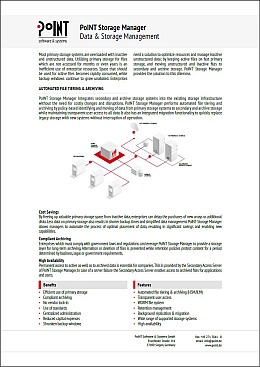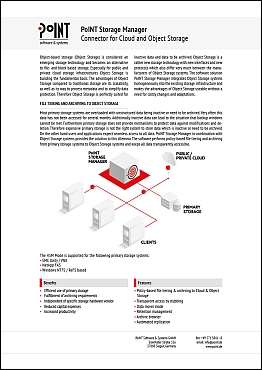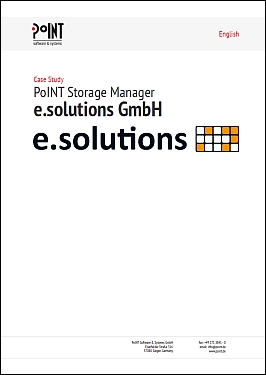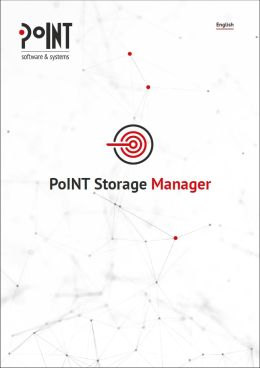Making the most of the benefits and compensating for the drawbacks: these are the goals of any business in any field. In IT, they can be easily achieved by implementing a hybrid storage infrastructure. This type of infrastructure lets companies bring together a wide range of storage technologies, creating an easy way to implement their specific requirements and design a personalised IT infrastructure. However, IT managers often raise concerns about data security with some storage systems and highlight potential issues with system migration. When systems are dependent on specific manufacturers, this can also make implementation more difficult, since not all combinations of devices, software and technologies will be supported.
The solution, and the basis for creating a hybrid storage infrastructure, can be found in data and storage management software that supports all current technologies and offers independence from storage system manufacturers. This hybrid foundation should also include multi-tier functionality and both on- and off-premises support.

Hybrid Storage Infrastructure: Combine Multiple Storage Technologies and Systems Across Multiple Tiers
In order to store data efficiently, businesses should design their storage architecture with at least two tiers, integrating different types of storage technologies and systems. While fast primary storage is suitable for the upper tier, cheaper secondary storage is perfectly adequate for the lower tier. Archive storage systems based on tape or optical drives, or private or public cloud systems, are particularly suitable for lower storage tiers. Tape offers a low cost per terabyte, a fast write speed and high capacity. Optical storage’s long lifespan is particularly advantageous. An infrastructure based on on- and off-premises solutions offers a particularly cost-effective flexibility.
In order to make the most of as many benefits as possible, businesses should integrate a range of technologies. The mix itself offers a number of additional benefits:
“Technological diversity within a multi-tier storage structure and across multiple storage locations increases stability, cost-effectiveness and flexibility. Businesses who use a hybrid storage infrastructure can also easily realize technological and system migrations,” says Thomas Thalmann, CEO, PoINT Software & Systems GmbH.
Under such a system, copies of data can be kept on multiple different media formats in multiple locations, offering greater security. Mandatory retention periods mean that security is particularly important for the bottom tier – the archive tier. Here, aside from encrypting data, it is also advisable to replicate it to ensure continuous availability even if one system fails.
After all, even archive-tier data needs to be accessible at all times. So in particular, it needs to be readable, meaning that it is a good idea to store data on a standardized file system. This standardization will make any potential future migrations easier. In particular, it offers great flexibility – a key goal for hybrid storage infrastructure.
Creating a Hybrid Storage Infrastructure with PoINT
The basis for a hybrid storage infrastructure is therefore a solution which supports a wide range of storage systems and technologies and which automatically transfers and archives data while offering transparent read access. Businesses will find exactly this type of solution in the PoINT Storage Manager (PSM) software, which also securely and reliably migrates and replicates data.
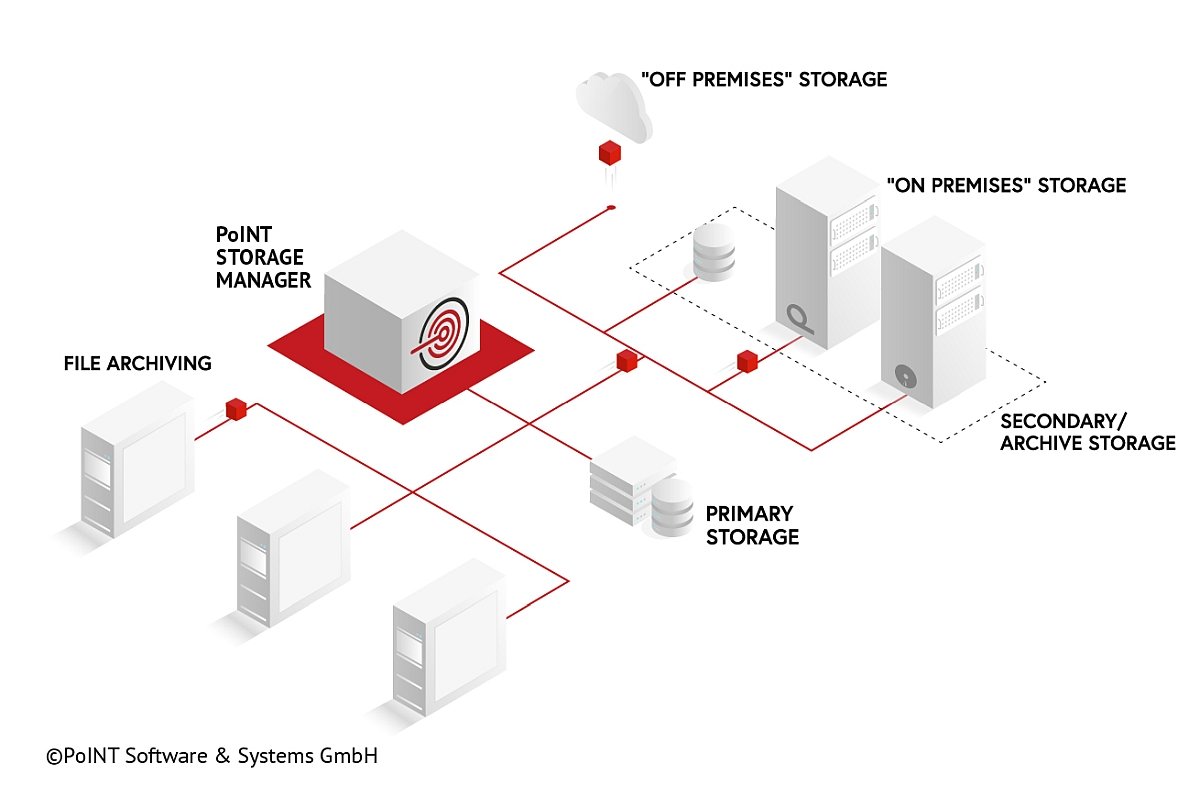
PSM can integrate with all kinds of technologies and systems (including private and public cloud systems, for example) using a range of connectors. PSM stores data in the standard UDF file system format and protects it against manipulation using WORM functionality for archives as well as additional security measures such as encryption. The PoINT Storage Manager therefore makes it possible to realize a hybrid storage infrastructure while also reducing associated administrative work to a minimum.

